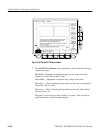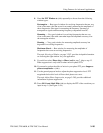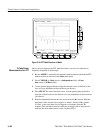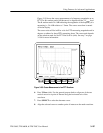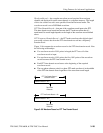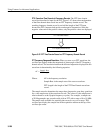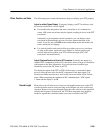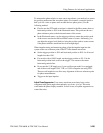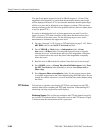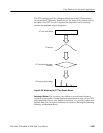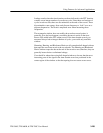
Using Features for Advanced Applications
3–202
TDS 500C, TDS 600B, & TDS 700C User Manual
To speed up oscilloscope response when using long record lengths, you can save
your source waveform in a reference memory and perform an FFT on the saved
waveform. That way the DSP will compute the FFT based on saved, static data
and will only update if you save a new waveform.
Selecting the right acquisition mode can produce less noisy FFTs.
Set up in Sample. Use sample mode until you have set up and turned on your
FFT. Sample mode can acquire repetitive and nonrepetitive waveforms and does
not affect the frequency response of the source waveform.
Hi Res and Average Reduce Noise. If the pulse is repetitive, Average mode may be
used to reduce noise in the signal at a cost of slower display response. Average
operates on repetitive waveforms only, and averaging does affect the frequency
response of the source waveform.
For TDS 500C and TDS 700C models only, after the FFT is set up and dis-
played, you can to turn on Hi Res mode to reduce the effect of noise in the
signal. Hi Res operates on both repetitive and nonrepetitive waveforms;
however, it does affect the frequency response of the source waveform.
Peak Detect and Envelope Add Distortion. Peak Detect and Envelope mode can
add significant distortion to the FFT results and are not recommended for use
with FFTs.
Once you have your waveform displayed optimally, you may magnify (or
reduce) it vertically and horizontally to inspect any feature you desire. Just be
sure the FFT waveform is the selected waveform. (Press MORE, then select the
FFT waveform in the More main menu. Then use the Vertical and Horizontal
SCALE knobs to adjust the math waveform size.)
If you wish to see the zoom factor (2X, 5X, etc.) you need to turn Zoom on:
press ZOOM ➞ On (side). The vertical and horizontal zoom factors appear on
screen.
Acquisition Mode
Zoom and Interpolation



